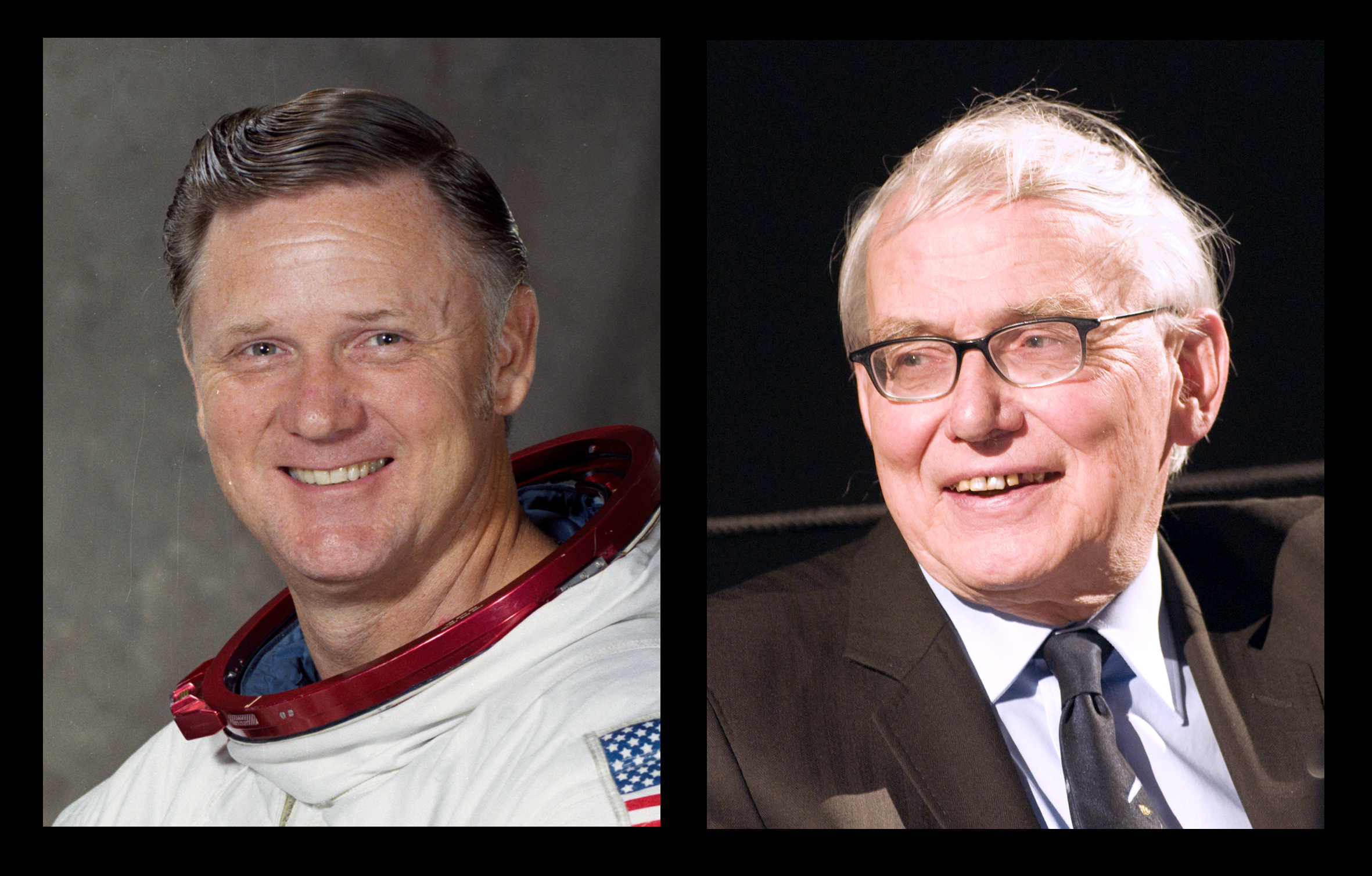Switzerland also had an experiment on the Skylab space station, the so-called Magnetospheric Particle Composition Experiment. It was developed and evaluated by Prof. Johannes Geiss of the University of Bern and NASA astronaut Don Lind.

Don Lind and Johannes Geiss. (NASA/G. Schwarz)
This foil experiment was very similar to the solar wind composition experiment that had been set up on the moon during the Apollo missions. The foils were mounted on an external strut of the Skylab structure at the Apollo Telescope Mount (ATM), Skylab’s solar observatory (see picture; source: University of Bern). The foils were able to capture particles approaching from almost any direction. At defined time intervals, the astronauts removed the outer collectors and revealed the inner ones. In this way, a time series of collections was created.

The foil from Bern on the Skylab traverse (Photo: NASA)
After the metallic foils had collected particles for the planned period, they were brought back to Earth for analysis in an extremely sensitive mass spectrometer at the University of Bern. Specifically, the trapped noble gases-helium, neon, and argon-were carefully measured because the relative abundances of their various isotopes are sensitive indicators of the origin of the particles.
Results of the experiment indicated, for example, that the majority of helium atoms impinging on Skylab with energies greater than 3 electron volts are transported to the Earth by the solar wind, and are accelerated in the magnetosphere. Also from measurements on neon, Lind and Geiss detected, for the first time, isotopic fractionation in the upper atmosphere.
One of the original Skylab foils will be shown to the public for the first time at KOSMOS Zurich on Thursday, 15 November 2018, on the occasion of the exclusive Swiss preview of the documentary film „Searching for Skylab“.
